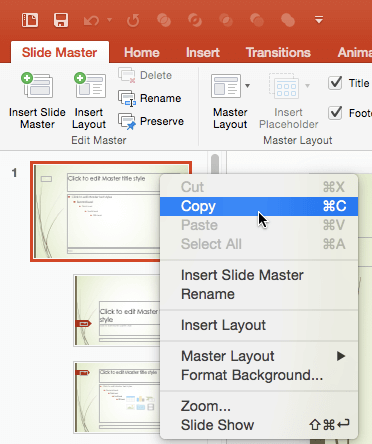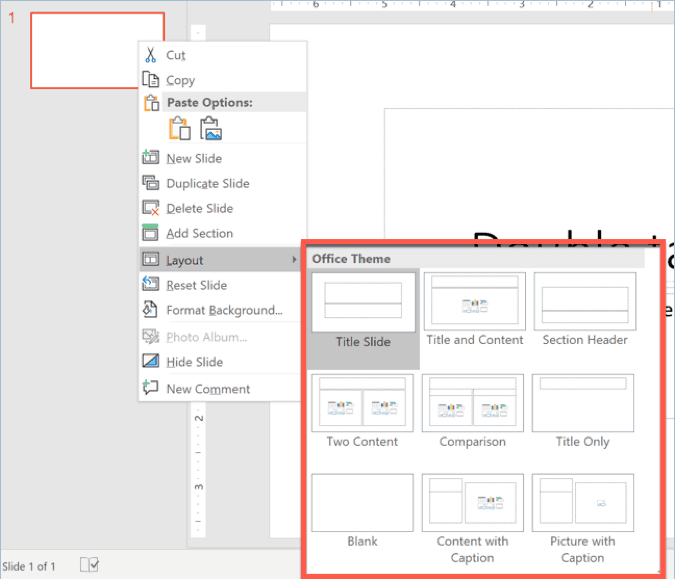



- Copy and paster powerpoint slides in microsoft office for mac without losing background series#
- Copy and paster powerpoint slides in microsoft office for mac without losing background windows#
When the Paste link radio button is selected, the pasted image will be linked to the original Prism file. Choosing Picture (Enhanced Metafile) gives best results when you wish to paste without embedding. Since PowerPoint is OLE-capable, the bitmap choices will seldom, if ever, be best. The other formats - pictures or bitmaps - can be useful for minimizing the size of your file or when you are pasting to a program that is not an OLE container. Pasting a Prism Project Object results in the embedding already described. When the Paste radio button is selected, you have a choice of pasting formats. Paste Special, which produces this dialog:
If the destination slide contains placeholders, select the appropriate one by clicking on it once - if you click twice, PowerPoint insert a "chart" from Microsoft Graph. If that's a blank slide, there is no need to select an insertion point. Open, or navigate to, the slide where you wish to place the image. There is no need to "select" the graph before copying - everything on the page will be copied to the clipboard (in the case of layouts, the entire layout will be transferred). In Prism, display the graph you want to copy. Setting the preferences for Send-to-PowerPoint: Open the Send to MS Office tab of the Prism Preferences dialog. (Important) Choices in Prism's preference dialog determine whether Prism's one-click Send buttons send an object, a link, or a picture. We'll say comparatively little about it in this article the only time when exporting/importing is more convenient than copying/pasting is when you are moving the image to PowerPoint on a different computer. This option moves a graph as a file, rather than via the clipboard. The Mac has no OLE capability, so you don't face this choice of pasting methods. If you want to edit it in a Prism environment, you'll have to start again It's simple and space-efficient, but you can only edit the pasted image in PowerPoint. Pasting a picture Only the graph is pasted - no links and no editing information.As with embedding, you can double-click on the pasted graph to edit it in a Prism environment, but now, changes also alter the source file. Linking The image is copied to PowerPoint, but a link to the source Prism file is also maintained.Changes that you make in this way affect only the PowerPoint file, not the source Prism file. You can double-click on the pasted graph in PowerPoint to edit it in a Prism environment. Embedding The Prism graph - and a copy of all data, analyses, and graphical settings needed to create the graph - are inserted into PowerPoint.
Copy and paster powerpoint slides in microsoft office for mac without losing background windows#
On Windows computers, where Object Linking and Embedding (OLE) is available, there are three pasting options: The Send-to-PowerPoint command copies the current graph or layout, creates a new slide in PowerPoint, and pastes. How should you move your Prism graph into PowerPoint? In the discussion to follow, when we refer to moving and editing graphs, the information applies equally well to layouts. This article should help you use Prism and PowerPoint together effectively.
Copy and paster powerpoint slides in microsoft office for mac without losing background series#
PowerPoint also allows users to project a series of slides, including those assembled from different program sources. Although Prism can send images to slide makers directly, PowerPoint offers additional graphical formatting options, including more elaborate backgrounds. Prism and Microsoft PowerPoint are a popular combination for producing 35-mm slides, overheads, or on-screen slide presentations. Creating a PowerPoint Slide from a Prism Graph


 0 kommentar(er)
0 kommentar(er)
